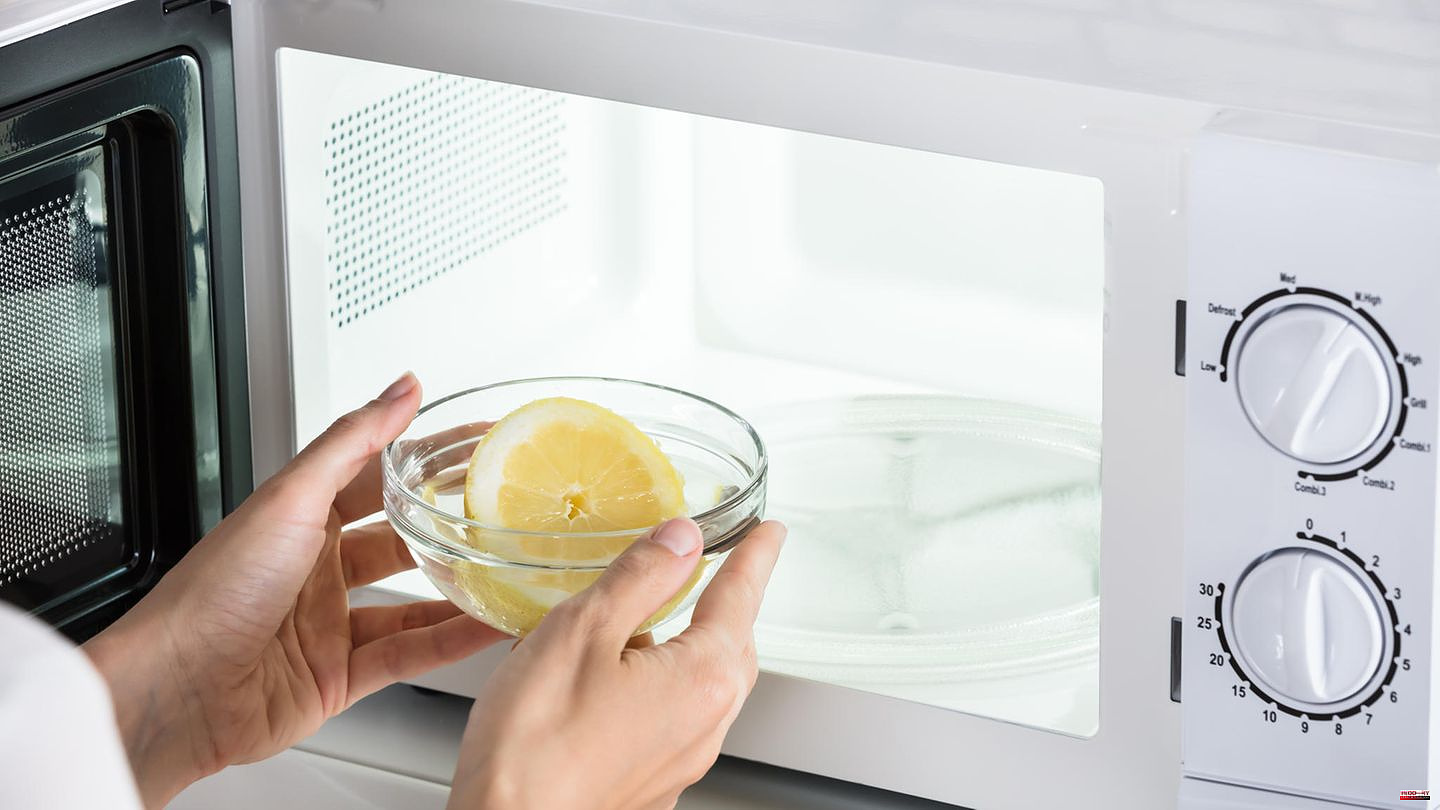There are special covers for microwaves that are designed to catch splashes when heating food. However, you cannot prevent the fine droplets of fat from spreading inside due to the rising water vapor and, over time, forming a fine lubricating film on the inner walls. In addition, one or two drops sometimes end up on the turntable and dry out there. To avoid unpleasant smells and prevent potential germs, you should clean your microwave regularly. With the right home remedies, the process only takes a few minutes.
A tried and tested home remedy for removing stubborn incrustations is the natural acid of a fresh lemon. It also gives off a pleasant citrus scent. To do this, you need to cut the fruit in half and squeeze the juice into a (microwave-safe) bowl filled with water. The two halves can then be added to the water bath. Now place the bowl in the microwave and let the device run on the highest level for about five minutes. Then all you have to do is wipe off the loosened dirt residue with a clean sponge.
Another way to clean the inside of the microwave is with ordinary baking powder or baking soda: Mix the powder with water (in a 2:1 ratio) until you get a creamy consistency. Now spread the paste on all areas that are heavily soiled (except for holes) and then let it take effect briefly. Then wipe off the baking soda-water mixture with a damp cloth. If there are still traces of food residue, you need to work the areas a little harder with the wet sponge and wipe them clean.
If you can't find lemon or baking soda at home, then definitely dish soap. You can also use this to clean a microwave by adding a few squirts of it to a small (microwave-safe) bowl of water. Then put the bowl in and proceed in the same way as with the lemon juice: turn on the microwave, wait five minutes and wipe off any food residue from the inside. Alternatively, you can take a damp cloth, sprinkle it with detergent and clean the inside of the microwave. However, this method takes a little longer.
Last but not least, one home remedy should not be missing from this list: vinegar. Mix two tablespoons with a small bowl of water and place in the microwave. Now the same process takes place again: let the device run at the highest level for five minutes. Here too, the rising water vapor attacks the stubborn incrustations and ensures that you can then easily remove the traces with a clean cloth. Then wipe the microwave again with a damp cloth and leave the door open so that the smell of vinegar can evaporate.
Tip: As an alternative to vinegar, you can also use citric acid, which not only has the same cleaning effect, but is said to have a more pleasant smell. To do this, add a tablespoon of the powder to a small bowl of water and then place it in the microwave. Switch the device on for five minutes and then wipe the interior walls with a clean cloth.
Savings tip: With a voucher from Otto, new customers can currently save ten euros on their first purchase (e.g. a new microwave).
After we have introduced you to four different home remedies with which you can easily clean the inside of a microwave, we would like to address another point - to be more precise, there are several, since the device does not only consist of inner walls: the turntable (and the rubber ring underneath), the door including the window and the housing should also be cleaned. And as follows:
Note: It is better to avoid using aggressive cleaning agents to clean the inside of the microwave. They could potentially damage sensitive surfaces.
The degree of soiling of a microwave depends on how often it is used. If the device is used every day, more and more food residue will naturally accumulate inside over a short period of time. If you don't remove them straight away, stubborn incrustations are not uncommon. For this reason, it is recommended to clean the device at least once a month. Even better, but not realistic for most people, is a weekly basic cleaning.
Sources: Ökotest, Utopia
This article contains so-called affiliate links. Further information are available here.












